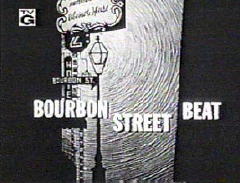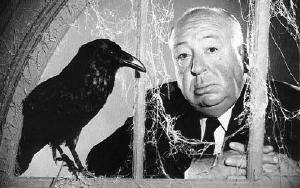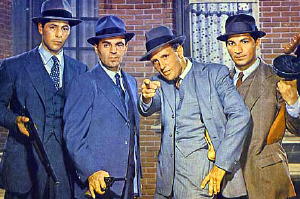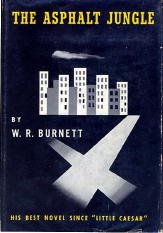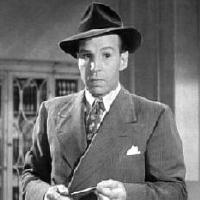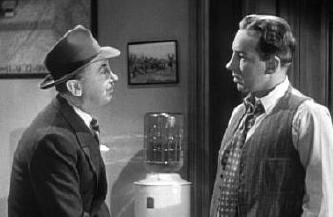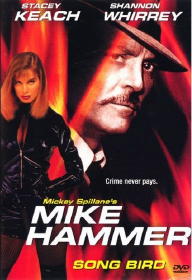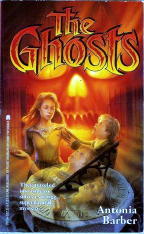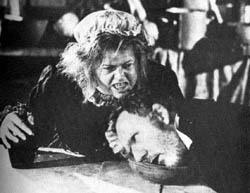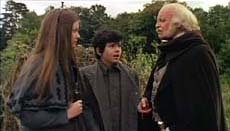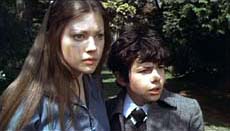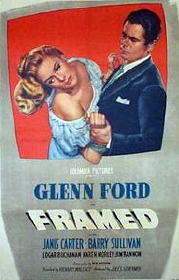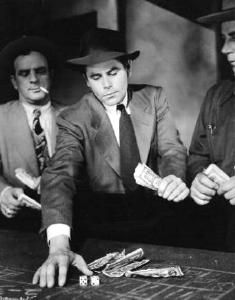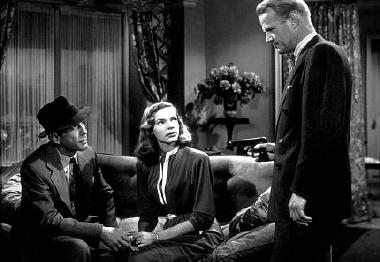Thu 17 Jan 2008
REPEAT PERFORMANCE. Eagle-Lion Films, 1947. Louis Hayward, Joan Leslie, Virginia Field, Tom Conway, Richard Basehart, Natalie Schafer, Benay Venuta. Director: Alfred L. Werker; based on the mystery novel of the same title by William O’Farrell.
William O’Farrell wrote 13 or so crime novels between 1942 and 1962. Toward the end of his career he wrote paperback originals (Dell, Gold Medal, Lancer), but the first one he wrote was Repeat Performance, a hardcover from Houghton Mifflin in 1942. His next book didn’t come out until after the war, in 1948.
As sometimes happens, it’s the first book that attracts the most attention, and so it was with this book. It was the only one of O’Farrell’s novels that was made into a movie until 1987, when a French company made Dernier été à Tanger, based on The Devil His Due (Doubleday, 1955). O’Farrell does have a handful of TV credits, according to IMDB: Perry Mason, Alfred Hitchcock, and so on, and a TV remake was made of Repeat Performance in 1989, a film entitled Turn Back the Clock, with Connie Sellecca in the leading role.
 In 1947, it was Joan Leslie who was the star, one of a number of leading roles she had for smaller companies like Eagle-Lion, and her career lasted long enough, thanks to television, for her to be given a walk-on role in the remake as a guest at a party. She was full-faced and very pretty without quite being beautiful, but then again your opinion need not necessarily be the same as mine.
In 1947, it was Joan Leslie who was the star, one of a number of leading roles she had for smaller companies like Eagle-Lion, and her career lasted long enough, thanks to television, for her to be given a walk-on role in the remake as a guest at a party. She was full-faced and very pretty without quite being beautiful, but then again your opinion need not necessarily be the same as mine.
The beginning and end of Repeat Performance is dark and stylish enough for it to be considered in many quarters as a noir film, but without the beginning and end, it is frothy and soap opera-y and very nearly not a crime film at all. It begins with Sheila Paige (Joan Leslie) shooting a man in a Manhattan apartment on New Year’s Eve, then fleeing the scene of the crime through streets crowded and filled with merry-makers.
The man, as it turns out, was her husband Barney, a failed and now-alcoholic playwright played by Louis Hayward. We don’t know any of the details right away, only that Sheila is frightened and needs help. And on the brink of the New Year, her wish to live the year over again, and to make things come out right, is granted.
A nice fantasy touch. She remembers the year before, but no one else does, except (gradually) poet William Williams (Richard Basehart, in his first film), a tragically weak creature with hints of self-esteem. Sheila’s husband is not only a lush, but a louse and a womanizer, the woman in this case being an ultra- glamorous British playwright named Paula Costello (Virginia Field).

Can Sheila live the year over again and make the outcome turn out differently? Can she keep her husband away from Paula by shuffling him off to California? Can she convince William that having Mrs. Shaw (Natalie Schafer) as a patroness, and a controlling one at that, is not likely to be in his best interest?
You’ll have to watch and see. The fantasy elements give the movie a premise, but otherwise they are not followed up on. The crime element is shoved to the background. It’s always there, mind you, as you watch Sheila relive her life, with differences, but as I say, trim five minutes from both the beginning and the end, and you don’t have a mystery movie at all. And probably not much a story, either, so no, don’t trim it … a mystery film it is.
Is it noir? Yes, if one aspect of noir films is seeing lives swirl and careen out of control, and another is a dark beginning and (hints are) a dark ending. No, if noir does not involve froth and soap flakes, which too much of this one does.

[UPDATE.] 01-22-08. For those of you conveniently located near San Francisco, Repeat Performance will be the lead-off attraction for this year’s Noir City film festival. Date: Friday, January 25th. Joan Leslie will be in attendance, and after the screening she will be interviewed by festival host Eddie Muller.
Connecticut, unfortunately, is a mere 3000 miles away, else I’d be there for sure.
